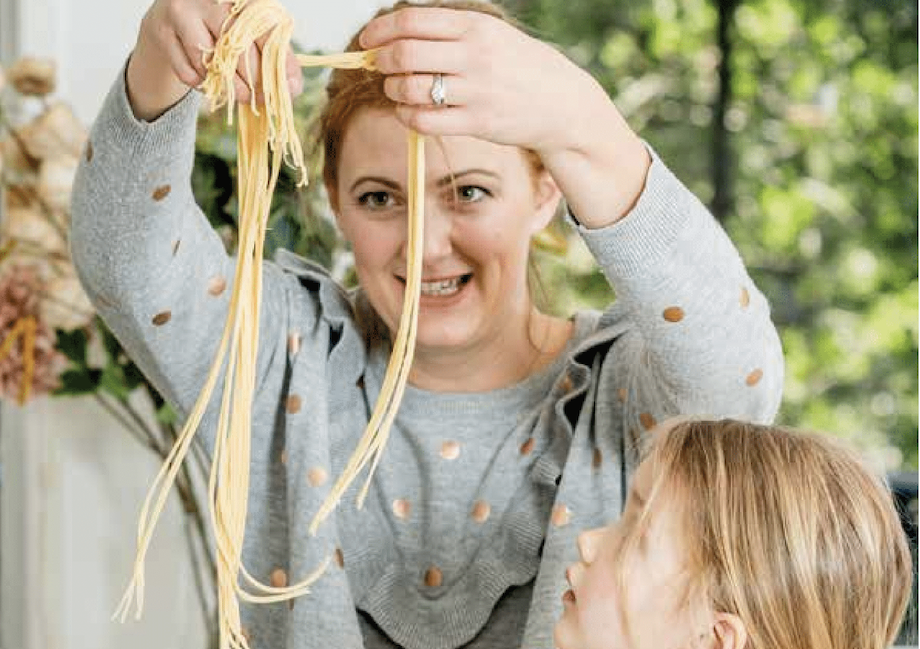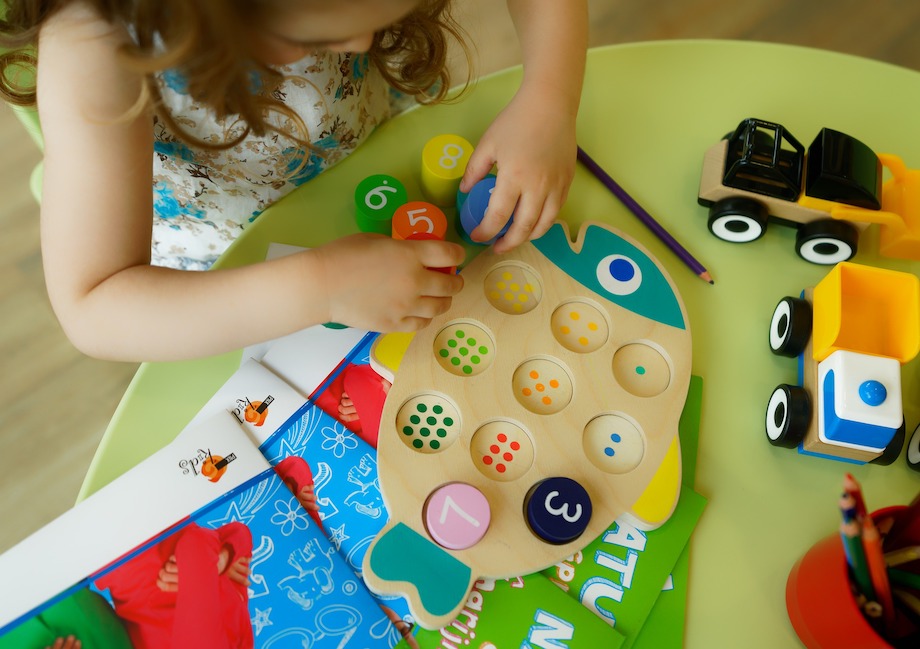
I remember chatting with a friend a few years ago. She likened feeding her toddler to psychological warfare. She set the scene of her and her 3-year-old son eyeballing each other as they unblinkingly passed a cherry tomato back and forth across the table. She lost the battle (daily) but eventually won the war. One day she gave her son a cherry tomato and he just popped it into his mouth and that was that. She shrieked and jumped around like a madwoman, while her son, who had forgotten about not liking tomatoes, didn’t get what the excitement was about.
You can’t help but laugh, as it’s every parent’s story, and it almost makes you wonder if fussiness is some form of ‘rite of passage’ for toddlers. Children decide to turn away food for reasons that span from the sublime to the ridiculous – like the cucumber touching the carrot, or that you used the yellow plate and not the green plate (apart from Tuesdays as then it’s the other way around). It can be frustrating, amusing and bewildering at the same time.
It can also be stressful, especially if the behaviour persists for a prolonged period and you become unsure if your children are getting enough nutrients. Teaching your children to appreciate and enjoy wholesome food is arguably one of the most important jobs you as a parent have when preparing them for a healthy future.
However, when us parents struggle to find the time to cook meals from scratch during the week, it’s tempting to fall back on processed snacks or meals that you know your child will eat. This is further compounded when their little taste buds adapt very quickly to additives like salt, sugar and artificial flavours – which in turn can lead to rejection of real food. Children, like adults, can tend to prefer processed foods once they get used to them.
This is because they have higher quantities of sodium and sugar to create more flavour. Manufacturers also use food additives to improve texture, colour and flavour to make their products more appealing, which again sends us on a path away from what real food should taste like.So why do we as parents tend towards buying processed foods and snacks? Because it is convenient! Because we don’t have time to bake for hours every week! Because we are juggling a hundred things at once and have to grab food on the way out of the door to the playground. Because they are often cheap, and this is a very expensive time in our lives. Because some manufacturers make us believe the foods are healthy when they aren’t.
The most important thing to remember in all of this is that although children quickly get used to processed flavours, this can be reversed. Children can also be taught to understand what is healthy and what isn’t, what is good for them and what is not so good for them. Therefore – even though navigating the fussy behaviour can be tough and challenging – I want to help you maintain your perseverance by giving you seven tips to help you through the fussy stage.
Start by making it easier for yourself
My top tip is to have easy and simple wholefoods ready to go. The following are all foods that can be prepared quickly (or just grabbed on the way out):
- Chopped fresh fruit
- Nuts and seeds (but be mindful when serving this to younger children)
- Boiled eggs
- Avocado on thin pieces of bread
- Sliced veggies & hummus
- A few Tot’s Pantry meals in the freezer for when you’re short of time and your children are hangry!
Find a common goal
Like the rest of us, when something seems a bit hard and you’d rather not do it, finding some good motivation is a terrific strategy. Use something or someone that your child aspires to be as key inspiration for them to eat wholefoods. Some good examples that have worked for me are ‘strong like your daddy’, ‘fast like a cheetah’ or ‘as smart as an astronaut’. Explain that they need to eat healthy foods if they want to grow big and strong like their heroes.
Set it straight
Explain what healthy foods are and aren’t. Explain that the less healthy foods like chips and lollies don’t make you big and strong. Ask your children what they think of different foods and get them to identify if they are healthy or not. Set clear rules around mealtimes and stick to them. Such as:
- No snacks for an hour before mealtime. If they complain they are hungry we can explain that it is ok to feel a bit hungry before a meal.
- There is no alternative. That is their dinner, and if they won’t eat it, that is fine but there is nothing else (we don’t want to force foods and risk negative associations).
Walk the talk
If you follow a good and healthy diet, your children will be way more inclined to eat healthier foods. If they are turning their nose up at some food, make a fuss about how delicious you think it is. Feel free to say that all their heroes also love this food, and then stand up and tell them how big and strong that food just made you.
Junior MasterChef
Involve your children in the cooking and prep, or at least the fun parts of it. Children usually love helping out and feeling like you need their assistance. This also gives them ownership of the food that’s being served. Be warned, things will get very messy. Just keep reminding yourself that this is great for their food journey so a little bit (hah!) of extra cleaning will be worth it.
Have fun with food
Present food in a funny and cute way that will help capture the interest of your children. Make their initials out of peas, or a smiley face with the food on their plate. Cut the veggies into fun shapes. Carrots can turn into a lion and cucumbers can easily be a snake! We don’t want to rely on this being a standard but every now and again it is fun to do.
Don’t give up
Keep offering your children foods. Just because they turn something away once, doesn’t mean they won’t ever eat it. Also, don’t assume that your children won’t like certain foods. My daughter Charlotte loves pickled onions and sauerkraut! Even the most unexpected foods can be enjoyed, don’t be afraid to give it a go!
Lastly, don’t blame yourself if your children aren’t interested in a certain food for a while – you are doing a great job! If you try some of these tips I’m confident you’ll see a change in the way your fussy eaters approach their meals.
I probably don’t have to mention all the research that points to the benefits of wholefoods for growing bodies, but let that serve as an inspiration to persevere with your quest to expand your children’s palate – not a prompt to feel guilty. We are all busy, and for the days that you don’t have time to prepare meals, know that having Tot’s Pantry’s meals in your freezer is a good solution. I make them just as you would in your own kitchen, no preservatives or food additives, just wholesome goodness that only takes minutes to heat up.
Veggie Mac ‘n’ Cheese
Our range of meals are simple and beautifully made for children. One recipe in particular – our Veggie Mac ‘n’ Cheese has been designed specifically for the fussiest of monkeys. The sauce is silky smooth and there is not a veggie to be seen (but they are there ;)) We are very happy to share our recipe with Kiwiparent readers.
This quantity makes 5 Tot’s Pantry meals, so you can pop some in the freezer for another night.
Ingredients
- 5ml Grapeseed Oil
- 30g onion
- 1 clove garlic
- 150g cauliflower florets
- 65g carrot
- 25g parsnip
- 100ml milk
- 50g cheese (we use Colby)
- 225ml veg stock
- 35g drained and rinsed cannellini beans
- 150g macaroni pasta
Method
- Heat the oil in a pan and add chopped onion and garlic. Saute for a few mins until soft but not brown.
- Add the cauliflower, carrot, parsnip, veg stock and milk. Cook until veggies are almost soft.
- Cook the macaroni as per packet instructions, drain and set aside.
- Add the beans to the sauce and cook for a further 5 mins.
- Use a stick blender to make the sauce super smooth.
- Add grated cheese and stir through until it has all melted.
- Stir the sauce through the pasta and serve.
Quick Frittata for kids
This was my go-to when I was back at work and bringing my son James home at 5pm after a full day at daycare. I was in my first trimester with Charlotte and we would both come home dog-tired and very cranky! This omelette is ready in less than 10 minutes but was always happily eaten by James. For 2 serves (mum and toddler).
Ingredients
- 3 eggs
- 100g cheese (we use Colby for its mild taste)
- 1–2 spring onions, finely diced
- ½ courgette grated
- pinch of paprika
- 1/2 tablespoon of olive oil
- 25g raisins (optional)
Method
- Preheat the grill to 200 degrees Celsius.
- Beat the eggs in a large bowl. Add grated cheese, veg and raisins (if using). Stir through the paprika.
- Heat oil in a medium/small frying pan and gently fry the spring onions for a couple of minutes until softened.
- Pour in egg mixture and cook gently until the base has set.
- Place under the grill and cook for a few more minutes until the top is golden and set.
- Slice into wedges and serve with salad veggies or broccoli and peas.
Kumara and chocolate bliss balls
I often have a batch of bliss balls in my freezer ready to drop in a lunchbox or have as a snack. I always look to add veggies to as much as possible, so I love this recipe, as do my children.Makes about 30 bliss balls:
Ingredients
- 1 cup orange kumara, peeled, diced and boiled until soft
- 1 cup dates
- 1 cup shredded coconut
- 1 cup peanuts
- 1/4 cup cocoa powder
- zest of 1 orange
- 1 tablespoon orange juice
- 1 teaspoon cinnamon
You can use extra coconut for rolling the balls at the end, but I find that my children don’t go for that, so I leave it out.
Method
- Put all ingredients into a food processor.
- Blitz until combined (pushing the mixture down occasionally if it sticks).
- Using a tablespoon, roll the mixture into small balls. Wet hands make this much easier.
- Roll balls in coconut to coat (optional)
- Chill in the fridge for at least half an hour before eating, or freeze and allow to defrost before eating.
Re-educating children to enjoy non-processed foods
- Turn it into a rule to never order children’s meals as they tend to be deep-fried and not include veggies. Get a normal meal instead and split it between your children or ask for a smaller serve.
- Introduce your children to the joy of sharing food by making platters of fruit, veggie sticks and hummus for when they have friends over. Seeing their friends eating the food will serve as encouragement.
- Try not to give them snacks that come in a wrapping. Keep it simple and give them fruit, nuts and veggies as snacks for their lunchbox.
- Include them as much as you can in the cooking, preparing (and even growing) of food as it will make them more appreciative of what’s being served.
- Lastly, keep it positive. Focus on what’s good about wholefoods and how it will make them big and strong!







